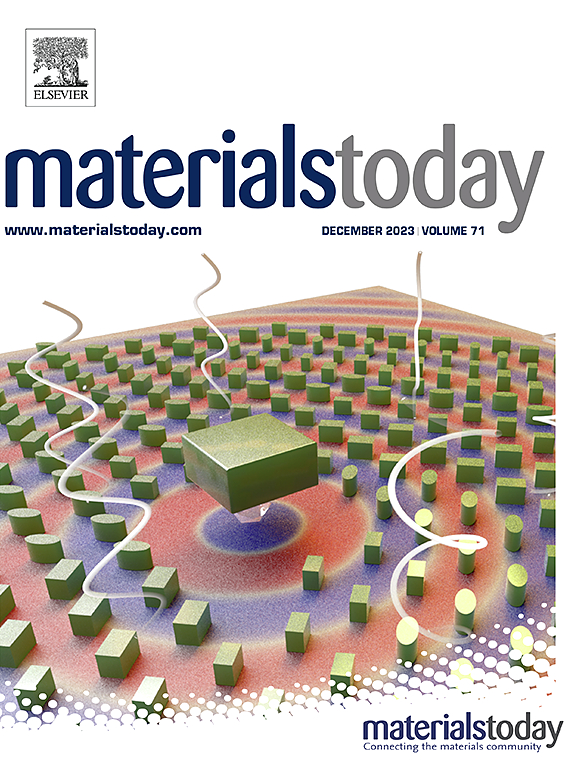Rapid electrical-current-activated sintering achieves robust cladding with uniform nanocrystalline grains
IF 21.1
1区 材料科学
Q1 MATERIALS SCIENCE, MULTIDISCIPLINARY
引用次数: 0
Abstract
Nanocrystalline (NC) metals possess high strength due to its extremely small grain size, but the strength-plasticity trade-off, poor thermal stability, and limitation to a few micrometers in size have seriously hampered their widespread application for a long time. Here, we propose a universal and facile strategy to solve these problems all at once, by exploiting the synergistic aspect of rapid electrical-current-activated sintering (RECAS) and multi-component NC alloy. We demonstrate RECAS as an efficient way to achieve dense and robust claddings versatile in dimensions (i.e., ≥1 mm in thickness), also with uniform NC grain sizes. The NC CoCrNi medium-entropy alloy cladding is used to demonstrate the simultaneous realization of excellent strength-plasticity combination, and unprecedented high thermal stability of NC grain size up to ∼ 0.84Tm (Tm, melting point), and the robust performance in terms of resistance to wear, corrosion and cavitation erosion. These advances open an avenue to a much-expanded repertoire of available parts made of NC metals/alloys (including their size, shape and composition), as well as an increased flexibility with regard to property combinations that extend application possibilities.

快速电流激活烧结可获得具有均匀纳米晶粒的坚固包层
纳米晶金属因其极小的晶粒尺寸而具有很高的强度,但其强度塑性权衡、热稳定性差、尺寸局限于几微米等问题长期以来严重阻碍了其广泛应用。在这里,我们提出了一种通用和简便的策略,通过利用快速电流激活烧结(RECAS)和多组分数控合金的协同方面,一次性解决这些问题。我们证明RECAS是一种有效的方法,可以实现多种尺寸(即厚度≥1毫米)的致密和坚固的包层,也具有均匀的NC晶粒尺寸。采用NC CoCrNi中熵合金包层,同时实现了优异的强度-塑性结合,NC晶粒尺寸高达~ 0.84Tm (Tm,熔点),具有前所未有的高热稳定性,并且在耐磨损、耐腐蚀和抗空化侵蚀方面具有强大的性能。这些进步为数控金属/合金制造的可用部件(包括其尺寸,形状和成分)的扩展曲目开辟了道路,并且在扩展应用可能性的属性组合方面增加了灵活性。
本文章由计算机程序翻译,如有差异,请以英文原文为准。
求助全文
约1分钟内获得全文
求助全文
来源期刊

Materials Today
工程技术-材料科学:综合
CiteScore
36.30
自引率
1.20%
发文量
237
审稿时长
23 days
期刊介绍:
Materials Today is the leading journal in the Materials Today family, focusing on the latest and most impactful work in the materials science community. With a reputation for excellence in news and reviews, the journal has now expanded its coverage to include original research and aims to be at the forefront of the field.
We welcome comprehensive articles, short communications, and review articles from established leaders in the rapidly evolving fields of materials science and related disciplines. We strive to provide authors with rigorous peer review, fast publication, and maximum exposure for their work. While we only accept the most significant manuscripts, our speedy evaluation process ensures that there are no unnecessary publication delays.
 求助内容:
求助内容: 应助结果提醒方式:
应助结果提醒方式:


